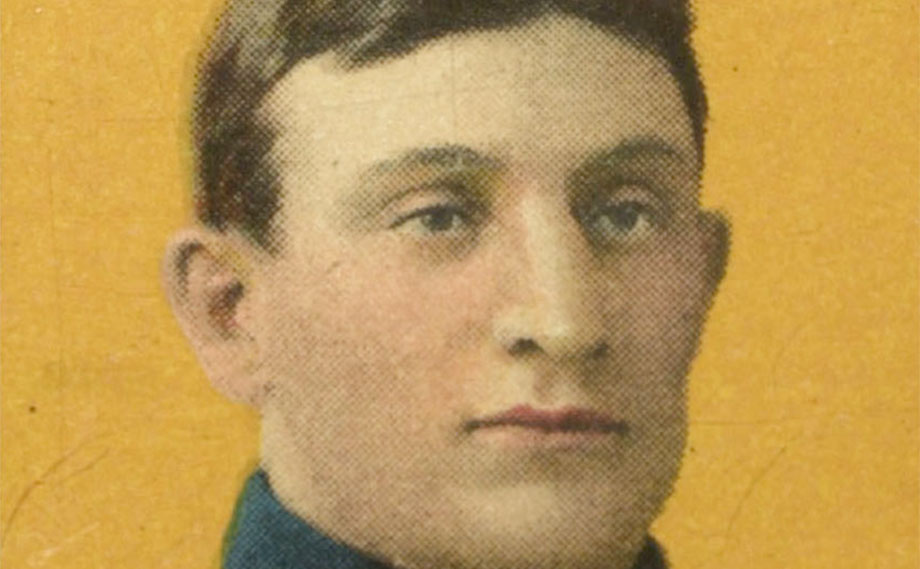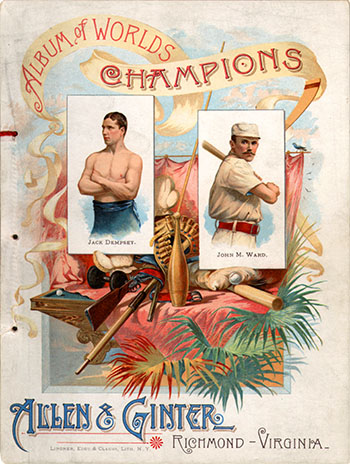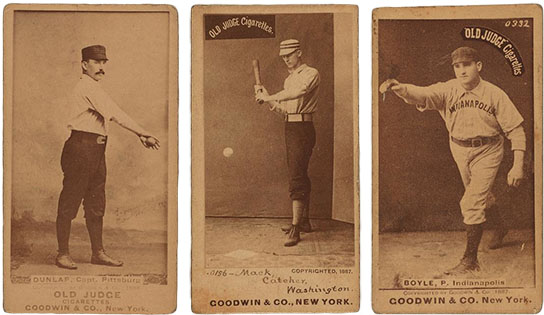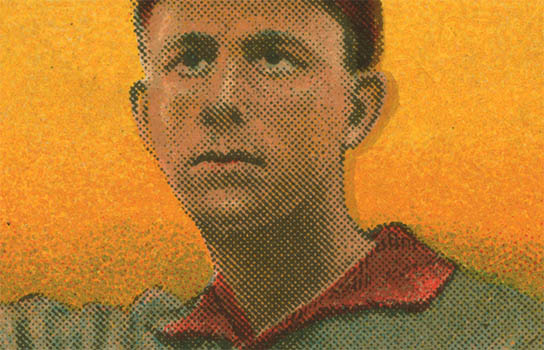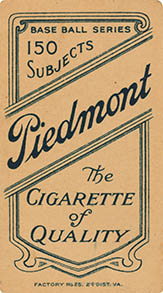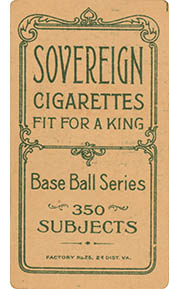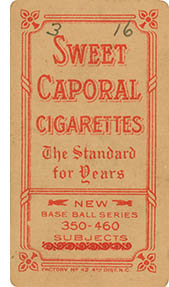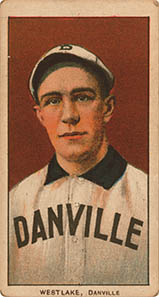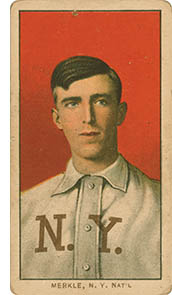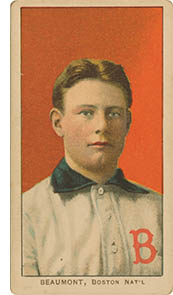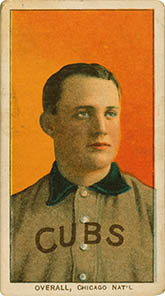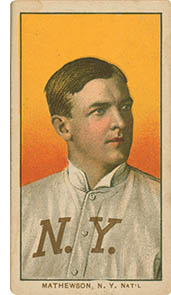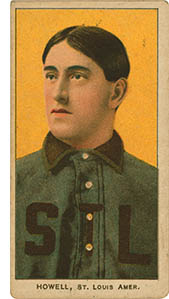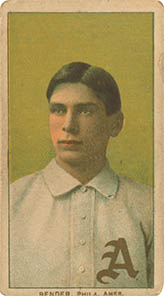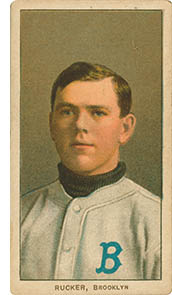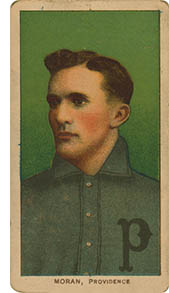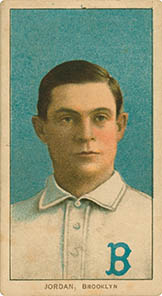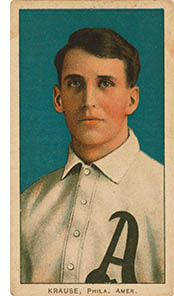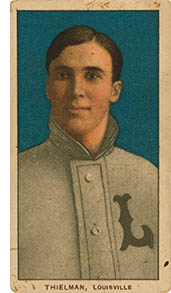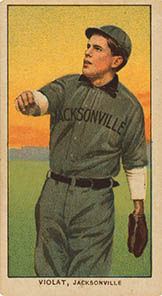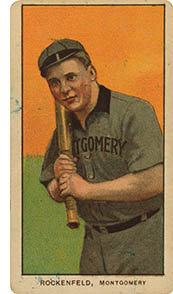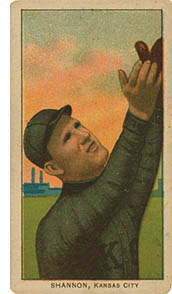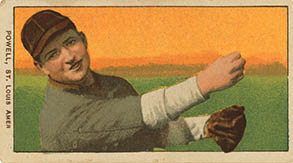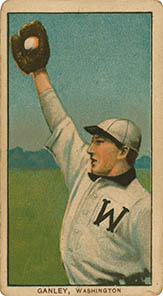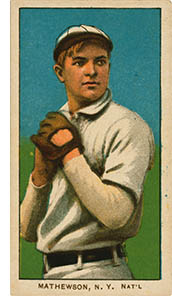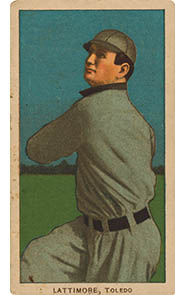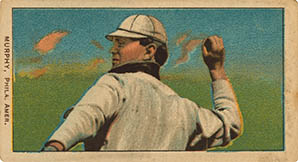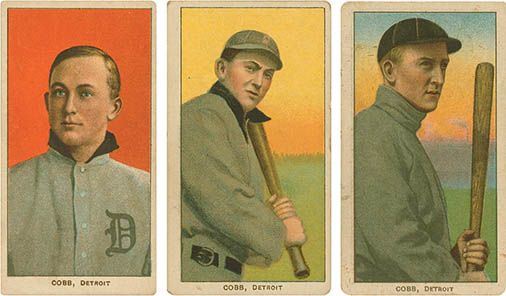This extreme detail is the face of the Flying Dutchman – hall-of-fame Pittsburg shortstop Johannes Peter “Honus” Wagner. The lithographed tobacco card, illustrated from a 1902 photo, was issued by Piedmont Cigarettes in 1909 – just a year after his stunning season which historian Bill James described as “the greatest single season for any player in baseball history.”
According to legend Wagner didn’t want to be associated with cigarette smoking and his card was quickly pulled from the series. The best guess is somewhere between 50–75 Wagner cards still exist.
The example above, which may have been was “cleaned up” with an X-acto knife in the 1980s, was most recently purchased by the Arizona Diamondbacks owner Ken Kendrick for 2.7 million USD, making it not only the most valuable baseball card of all time, but on a
price-per-square-
inch basis, one of the most valuable pieces of paper ever printed.1
Toward the end of the nineteenth century, as baseball began its meteoritic rise in popularity, tobacco companies began to include photos or lithographs of “base ball men” among their many series of popular cigarette cards and premiums. These chromolithographs in Allen & Ginter’s 1887 “World’s Champions” series are an early example:
Cover, Allen & Ginter album, ca.1887. Duke
In 1887 Goodwin & Co. began issuing a set of albumin-print baseball cards with their Old Judge cigarettes. It was the first major set of baseball cards and eventually including over 500 players from more than 40 teams.2 The result was nothing short of extraordinary. The cards became a sensation among boys, who preferred them even over the cards of scandalously-attired actresses. Some communities, fearing that these baseball cards were turning their children into “smoking fiends” (they, of course, were) even banned the cards. It was marketing genius.
Old Judge cards, ca.1887. LOC3
Other tobacco companies took notice and in a frenzied advertising war many other brands began offering baseball cards. Of course, it didn’t take long for J. B. Duke, who had first gasped the potential of the automatic rolling machine, to win this war and force his competitors (including Allen & Ginter and Goodwin) to join his consortium – the monolithic American Tobacco Company.
As Dave Jamieson wrote “Conventional wisdom holds that the cigarette launched the baseball card. But one could just as easily argue that the baseball card launched the cigarette.” 3
Over the years several regional ATC brands issued baseball cards, but it wasn’t until 1909 that ATC produced a large, nationally-available set. This set, now known simply as the T206, would become the most important in the history of the game.4
By the beginning of 1909 the ATC, typically through a local sportswriter, began contacting players for permission to use their likenesses for “a scheme of nicely colored pictures.” Although many of the specific steps in production are now lost to the mists of time it appears that it went something like this: Artists at the American Lithographic Company (another monopoly like the ATC) prepared lithographic plates from available photos, often from cabinet cards taken by the Boston photographer Carl Horner. Cardboard sheets of an unknown size were printed as six-color lithographs on the front (in the order of yellow → black (the outlines and halftone) → brown → blue → dark green → red) and one color on the back. Here is a detail of the lithographic process:
The printed sheets were cut into roughly 1½ × 2⅝" cards, then sent to one of six ATC factories were they were added to slide-and-shell cigarette packs or loose tobacco pouches.
The first issue of 150 subjects, advertised as “Pictures of famous baseball players... handsomely lithographed in colors” was in circulation by early summer. Like the Old Judge cards 20 years earlier, the T206 cards set off a collecting craze among boys, and again like the Old Judges, parents, religious and civic leaders feared that the cards were leading their children to ruin.
The first series was followed by overlapping 350, 350/460 and 460 subject sets. Between 1909–1911 the ATC, under 16 of its brands, issued a total of 524 different cards of players from the National, American, Southern and Minor leagues (including no less than 38 future hall-of-famers depicted on more than 70 cards). Considering all of the possible permutations of players and back advertisements, the set has been aptly described as “the monster.”
Under the Sherman Antitrust Act, the Dept. of Justice dissolved the ATC in 1911. Although the newly-created tobacco companies continued to advertise heavily, the tobacco card fell out of use largely in favor of print media. The baseball card became the provence of candy and gum companies, but it wasn’t until the Bowman and Topps cards of the early 1950s that a set rivaling the scale of the T206 was again produced.
The ATC never intended the T206 cards to be anything other than mass-produced cigarette advertising, but the ALC artists exploited color lithography in ways never considered before. As historian (among other things) Keith Olberman stated:
“It’s a beautiful set aesthetically. Theres something transcendent about those cards that certainly had not been matched prior to them being released and I dont think really has been achieved since.” 6
Collectors call this “eye appeal” and its one of several reasons given for the continued popularity of the set. Today these cards range in price from 10–30 USD for common minor leaguers to six+ figures for the “big four” (Doyle error, Magie error, Plank and Wagner).
Looking at these cards now, a century later, reminds us of when the game was something different. Historians call it the “dead-ball era,” but it was also the era that produced the game’s first superstars. It was the game before it was a multi-billion dollar business. The game before salary arbitration, steroids or Sabermetrics. And that, ultimately, may be their greatest appeal.
Of course, there is always that chance of finding the next Cobb, or Magie, or Wagner.
1. The only other thing you can compare the card to are rare stamps. Your humble narrator dosen’t collect baseball cards or stamps so these valus are largely lost on him, however it’s not hard to see the allure of collecting T206s.
2. The Old Judge cards, produced between 1887–1890, were albumen prints photographed by Joseph Hall of NYC. He took multiple photographs of each player (17 different photographs in the case of NY Giants Mike Dorgan) and the set eventually included 521 subjects and at least 2500 variations, with new variations still being discovered. As card historian/collector Lew Lipset said completing a set “is hopeless.” For more information see: Miller, Jay, et. al. The Photographic Baseball Cards of Goodwin & Company (1886–1890). 2008. (WorldCat).
3. Unless otherwise noted all of the images here are from the LOC’s wonderful Baseball Cards, 1887–1914.
4. Jamieson, Dave. Mint Condition: How Baseball Cards Became an American Obsession. New York: Atlantic Monthly Press, 2010. (WorldCat).
5. The T206 designation comes from Jefferson Burdick’s classification in his seminal tobacco card reference The American Card Catalog (Syracuse, NY: J. R. Burdick, 1939). (WorldCat).
6. Quoted from Holy Grail: The T206 Honus Wagner. (Nick and Colin Barnicle, Dir. ESPN films) (online).
13 Mar 2013, updated 20 Mar 2013 ‧ Design
